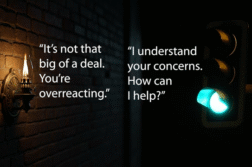ORLANDO, Fla. (Ivanhoe Newswire)- In 1983, Sally Ride became the first woman in space. In 2017, Peggy Whitson broke the U.S. record for the longest time in space for a woman. And just two years ago, two women became the first to take part in an all-female spacewalk. Despite these high-profile wins, only one in three undergraduate astronomy degrees, and only one in five physics degrees, are earned by women. How can parents inspire young women to study science and reach for the stars?
Tiny vials of moon dust unlock a world of information for planetary scientist Kerri Donaldson Hanna.
“I mean, it’s pretty exhilarating.” Donaldson Hanna states.
Donaldson Hanna is part of a team studying NASA’s lunar compact infrared imaging system. Or L-ciris. The thermal camera will help scientists find water sources on the moon’s south pole.
She says that “there’s portions of the south pole of the moon, they get absolutely no sunlight.”
The seeds of Donaldson Hanna’s space study were sown in an earthly place.
“I grew up on a small family farm in a very small town called Mexico, Missouri.” Donaldson Hanna explains.
But her yearly family vacation took her through the Kennedy Space Center.
“I think that was kind of like the first seeds of wow there’s something outside of earth.” Donaldson Hanna said.
Research scientist, Autumn Shackelford, also grew up in a tiny southern town. Her imagination caught fire early on after a family trip to a science center.
“My mom leaned over, and she said, ‘I think you’d be good at this sort of thing’.” Shackelford explains of her introduction to space.
Neither woman had a blueprint to follow when it came to studying physics or astronomy.
Donaldson Hanna jokes, “When I told my high school counselor that I wanted to go to school in Florida and study physics and space sciences, he asked me what my backup plan was.”
But both women were exposed to science by their families in positive, interactive ways. Both read and watched everything printed or produced about space, found supportive mentors, and searched out learning opportunities. Both say they are proof that it doesn’t matter where you start, with support and self-motivation women should reach for the moon and beyond.
The project that Donaldson Hanna’s lab is collaborating on, the L-ciris, is expected to launch aboard a lunar lander as early as December 2023. Study science
Source:
https://www.nasa.gov/press-release/nasa-selects-12-new-lunar-science-technology-investigations,
https://www.aip.org/statistics/reports/women-physics-and-astronomy-2019,
https://www.insider.com/female-astronauts-nasa-2019-5
Contributor(s) to this news report include: Cyndy McGrath, Producer; Roque Correa, Videographer and Editor.
To receive a free weekly email on Smart Living from Ivanhoe, sign up at: http://www.ivanhoe.com/ftk



